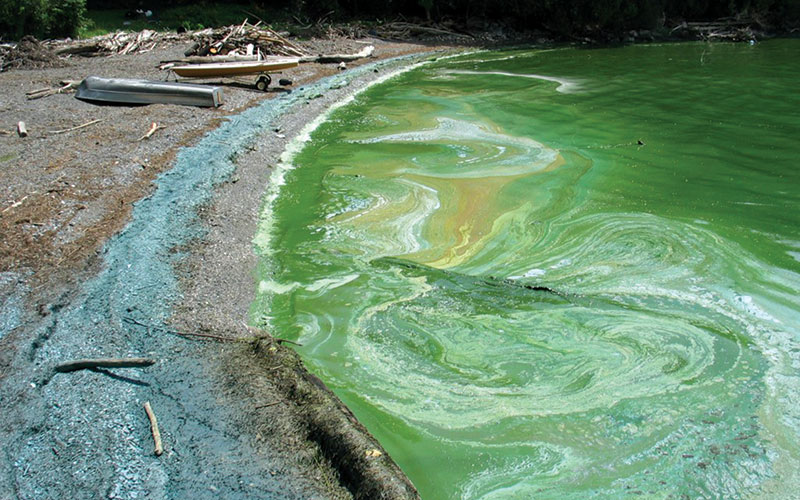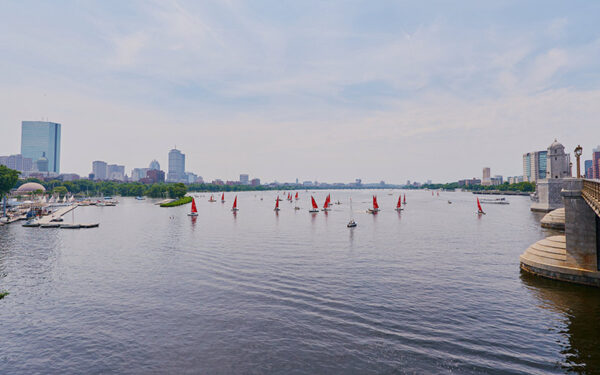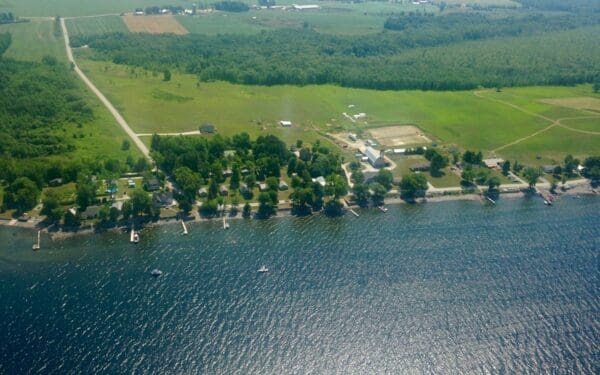
Toxic blue-green algae outbreaks have become the norm on Vermont's lakes, but the legislature still won't commit the long-term funding needed to push clean-up efforts forward.
Water was a hot topic of the 2018 Vermont legislative session, with many bills that touched on clean water challenges. We made some progress on critical issues related to stormwater pollution, but we’re still too far behind when it comes to the long-term funding we need to make true progress on cleaning up Lake Champlain and other ailing waters across the state.
Legislature Punts on Necessary Funding for Clean Water Projects (Again)
Above all, we know we need funding to meet our clean water goals. This session, the legislature directed $31.9 million toward clean water projects for the 2019 fiscal year, which begins on July 1. While most of these dollars are restricted to infrastructure investments, an additional $1.9 million of money was added to the clean water fund that can be used more flexibly.
That’s good news, but it’s small comfort given that the State still hasn’t established the long-term funding source we need to ensure we can meet our clean water goals. Here’s what happened:
Recognizing that cleaning up Vermont’s water would require a significant financial investment, a year and a half ago State Treasurer Beth Pearce negotiated an agreement to secure “bridge funding” to kickstart clean-up efforts. The idea was to give the legislature time to develop a long-term funding source. Those bridge funds came from the annual capital bill, spiking to $25 million for fiscal year 2019 from a base level of $10 to $12 million. But, starting in fiscal year 2020, the legislature expects that funding from the capital bill will drop back to the base level – which we know is not enough to clean up our waters.
The legislature committed to filling the void this year by establishing a long-term funding mechanism in Senate Bill 260, which also included enforcement measures to ensure accountability for public spending. Unfortunately, in the final days of the session, the House and Senate reached compromise by jettisoning any provisions for the critical funding needed. In the end, S. 260 is a shell of its former self that kicks the can down the road (again) when it comes to taking the meaningful action we need to clean up Vermont waters.
Natural Resources Bill Gives Towns More Options for Protecting Waterways
Promoting natural resource projects, such as tree plantings, wetlands restoration, and floodplain protection is critical to clean water. The Agency of Natural Resources introduced an innovative approach in House Bill 777 by pairing traditional infrastructure loans with natural resource funding. As cities and towns apply for funds through the Clean Water State Revolving Loan Fund, they will also be eligible for a natural resource grant. CLF supported H. 777 as it moved through the State House, and Governor Scott signed the bill into law on May 28.
Reins Tightened on Stormwater Pollution Management
Every time it rains, water flows over parking lots and rooftops, washing pollutants like chemicals, oils, sediment, and more into nearby rivers and streams. What’s more, because rain gushes so quickly over those watertight surfaces, it causes more streambank erosion than if it seeped slowly into the ground.
This session, the legislature addressed stormwater pollution by requiring more new development to put in place practices like rain gardens and constructed wetlands that absorb and filter stormwater before it reaches waterways. Currently, new development projects of at least an acre of impervious surface are required to treat stormwater while smaller projects are off the hook. House Bill 576 drops this threshold from one to a half acre. In addition, H. 576 provides greater clarity for a new stormwater permit focused on large areas of pavement known as the “three acre” permit.
Farms Given A Pass on Reporting
Manure from farm fields is a significant source of the phosphorus pollution that causes toxic blue-green algae outbreaks in our waters every summer, forcing beach closures and endangering people and pets. Numerous bills this session addressed nutrient management plans, a regulatory document that directs where, when, what, and how nutrients such as manure are applied to farm fields. In the end, the more stringent bills failed, and the only language that survived the session relates to a certification process.
The takeaway for clean water is that we’re left with the status quo. Large farms already must submit their nutrient management plans to the Agency of Agriculture, Food, and Markets, and they are accessible to the public. However, medium and certified small farms are not required to submit their plans and therefore they are not accessible to the public. When these regulatory documents are left on the farm without public access, it is nearly impossible to track progress toward meeting clean water targets.
Enforcement Left Solely in the Hands of Under-Resourced Agencies
The enforcement of environmental laws is discretionary. While agencies work hard to follow up on anonymous complaints, neither the Agency of Agriculture, Food, and Markets nor the Agency of Natural Resources has sufficient resources to pursue all violators.
To supplement government enforcement, the Senate passed new language that would empower citizens to uphold environmental laws. This would have given Vermonters the ability to notify the Agency and the polluter of a violation. If after 90 days, neither had taken corrective action, then a lawsuit could be brought.
This is not a new concept. “Citizen enforcement” is a part of 16 of the nation’s principle environmental laws, including the federal Clean Water Act. However, the citizen enforcement proposal was stripped out by the House, leaving enforcement solely to overworked and under-resourced agency staff.
Help for Lakes in Crisis
In response to the terrible algal outbreaks this past summer at Lake Carmi, the legislature enacted a new program to provide additional planning, funding, and authority for lakes that are considered to be “in crisis,” meaning they pose a potential harm to human health, a risk to the environment, and result in reduced property values in the watershed.
While we made some headway this session, especially on stormwater controls and natural resource protection, we’re far behind on the critical task of coming up with long-term funding for clean water. The success of our Lake Champlain efforts hinges on substantial investment in clean water projects. We can and must do better. CLF will be engaging communities and legislators throughout the summer and fall to ensure we are prepared to fund water quality next year.



